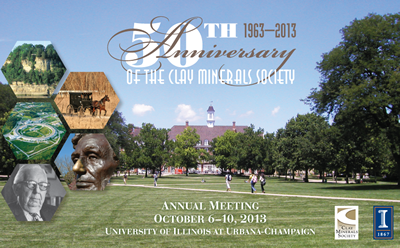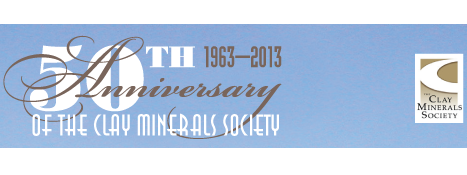 From 6-10 October 2013, the Clay Minerals Society will gather at the University of Illinois Urbana-Champaign and mark a significant milestone: their 50th anniversary. The October 9 barrier session will be of particular interest to engineering and construction professionals who work with geosynthetic clay liners (GCLs).
From 6-10 October 2013, the Clay Minerals Society will gather at the University of Illinois Urbana-Champaign and mark a significant milestone: their 50th anniversary. The October 9 barrier session will be of particular interest to engineering and construction professionals who work with geosynthetic clay liners (GCLs).
Multiple PDHs will be available to attendees.
LEARN MORE AND REGISTER
While the geosynthetic barrier market has long been known for the role geomembranes play, GCLs have increasingly influenced liner and capping strategies. Recent years have seen a number of major international events focus on GCL advances and benefits, and manufacturers are now utilizing nano-technology and other modifications of bentonite and affiliated GCL components to enhance barrier system performance.
The special “Barriers” symposium on Wednesday, October 9, will include a number of papers directly related to GCLs and feature many high-profile authors and presenters well-known in the international geosynthetics field.
Barriers Symposium Papers
- “Molecular Simulation of Clay Hydration: Structure and Thermodynamics as a Function of Temperature and Pressure” – Jeffery A. Greathouse, Stephanie L. Teich-McGoldrick, Carlos F. Jové Colón
- “Geosynthetic Clay Liners Employed in Barrier Systems Designed to Contain Hydrocarbon-Contaminated Soil in Antarctica” – Rebecca McWatters, Will Gates, A. Malek Bouazza, Daniel Wilkins, Greg Hince, Ian Snape, Daniel Jones, and R. Kerry Rowe
- “Prospects for Geosynthetic Clay Liner Applications in Mining and Industrial Facilities” – Will P. Gates and Abdelmalek Bouazza
- “Glycerol Carbonate-Bentonite Complexes for Enhanced Containment of Hypersaline Leachates” – Andras Fehervari, Antonio F. Patti, Terence W. Turney, Abdelmalek Bouazza,
- “Effects of Desiccation Cycling and Cation Exchange on Hydraulic Conductivity of Geosynthetic Clay Liners” – Faith M. Zangl*, William J. Likos, and Craig H. Benson
- “Effect of Ammonium on the Hydraulic conductivity of Geosynthetic Clay Liners” – Melissa Setz*, Amara Meier, Sabrina Bradshaw, and Craig H. Benson
- “Hydraulic Conductivity of Geosynthetic Clay Liners to Low-Level Radioactive Waste Leachate” – Kuo Tian*, Erin L. Hunter, Jiannan Chen, Craig H. Benson, and James M. Tinjum
- “Hydraulic Conductivity of Geosynthetic Clay Liners to Coal Combustion Product Leachates” – Jiannan Chen*, Craig H. Benson, William J. Likos, and Tuncer B. Edil
- “Long-Term Bentonite Hydraulic Conductivity Evolution under Low Hydraulic Gradients” – M. Victoria Villar
A special issue in Clays and Clay Minerals (the journal of the Clay Minerals Society) is being planned.
ADDITIONAL SESSIONS OF INTEREST
While the “Barriers” symposium will be of heightened interest to geosynthetics professionals, there are sessions throughout the Clay Minerals Society conference that are immediately applicable to and influence the use of GCLs.
Of note:
- The Radiological Waste sessions (Monday, October 7) focus on “Alteration and Cation Exchange Processes in Clays, Soils, and Engineered Clay Barriers for Radioactive Waste Disposal”
- The fracking sessions (Monday, October 7) focus on “Clay Minerals in Petroleum Reservoirs and Hydraulic Fracturing”
- The environmental track (Tuesday, October 8) is themed “Modified Clays for Environmental Applications”
CELEBRATING 50 YEARS
The Clay Minerals Society gathering brings together a broad range of professionals impacting the application and performance of clays in a variety of sectors. The first gatherings were launched by some of this multidisciplinary field’s earliest leaders in the United States, including Prof. Ralph Grim (University of Illinois), who taught the first “clay technology” courses in the US.
Learn more about the Clay Minerals Society’s history
For conference and registration information, visit:
http://www.clays.org/annual%20meeting/50th_annual_meeting_website/general.html












